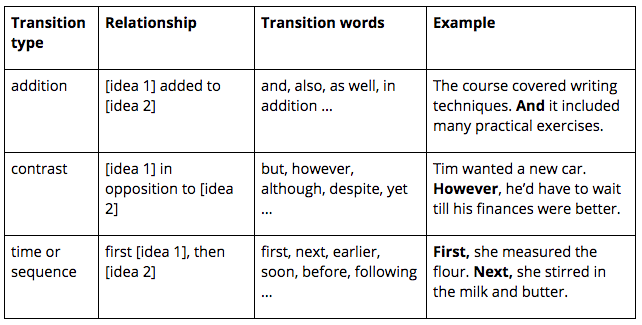Make Your Writing Flow
Episode #6 of the course Conversational writing: Engage your readers by Gay Merrill
In the last lesson, you learned to use sentence length variety to create reading rhythm. Today, we look at two ways to make your writing flow: transitions and varied sentence structure.
Good writing flow allows your reader to move smoothly through each sentence and paragraph.
When writing doesn’t flow, it’s missing elements that guide and focus the reader. A key element is a transition.
Transitions
Transitions are words and phrases that connect one idea to the next and show the relationship between ideas. You use transitions to create a logical flow between sentences and paragraphs.
The English language has many types of transitions, categorized by the relationship between ideas. The following table shows three transition types.

For a good overview, watch this five-minute video.
Now that you have an understanding of transitions, let’s move on to the second way to make your writing flow.
Varied Sentence Structure
Do you start many of your sentences the same way? When we write, we might often default to a standard way of starting our sentences.
Just as sentences with the same length create boredom, so do sentences that use the same structure.
To break the monotony of using the same sentence structure, try changing the way you start your sentences. Here are four simple ways to try.

Using good transitions makes your writing easier to read because they provide direction to your reader.
Exercise
1. Add a transitional sentence to each example sentence in the table above; for example: First, they looked at the map. Then they discovered they were lost.
2. Create a sentence of your own using each type of sentence start in the table above.
Want to learn how to grab your reader’s attention? Learn a simple technique in the next lesson.
Have fun writing,
Gay
Recommended books
Keys to Great Writing by Stephen Wilbers (see chapter 10)
Getting the Words Right: 39 Ways to Improve Your Writing by Theodore Cheney (see chapter 15)
Share with friends

